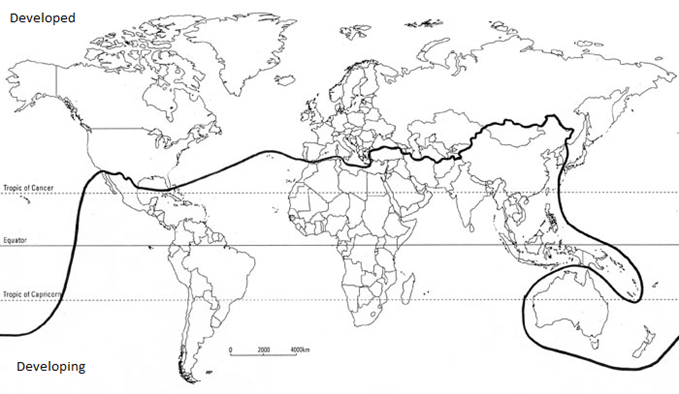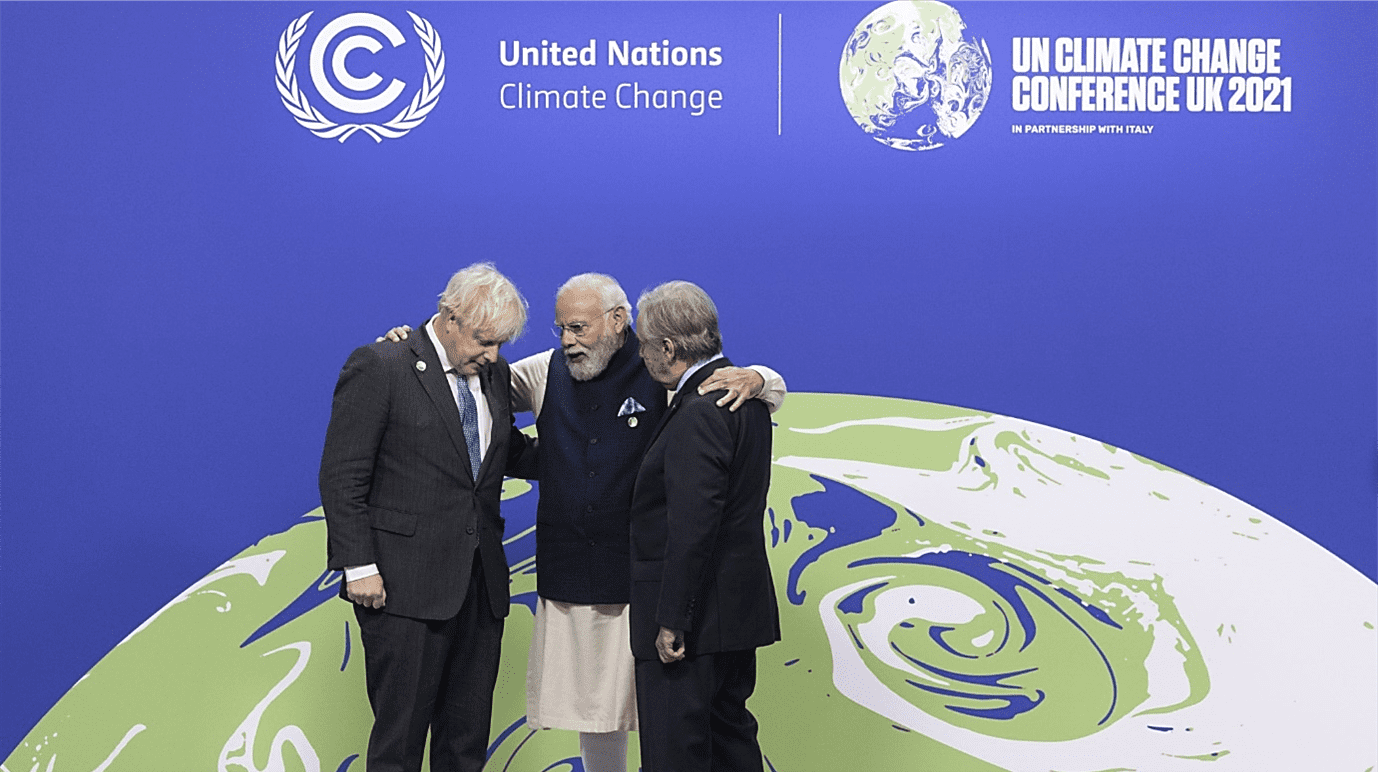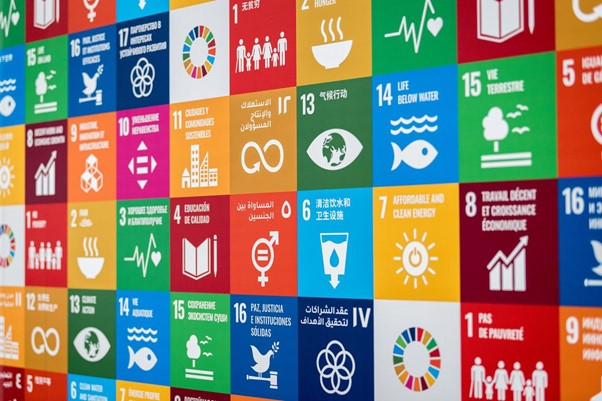How inequality threatens a riskier world
Modern life can sometimes feel like an endless negotiation with jeopardy. In 2022, we seem addicted to collectively running the gauntlet of risk – the risk of environmental collapse, the risk of contracting a deadly virus, the risk of nationalistic border strife spiraling out of control.
Yet, for most of us, such fears remain hypothetical, or of uncertain timescale, or unnecessarily inflated by trending headlines and media hype. So, what about the real world of risk? What are the clear and present dangers forecast by the experts – by those people in charge of steering businesses and governments towards risk mitigation?
What, according to them, are the most critical hazards looming on our shared horizon, and what actions should we be taking now to offset their potential harm?
The World Economic Forum (WEF) publishes an annual risks report, surveying governments, academics, businesses and NGOs around the world on the most profound challenges facing humanity and global society.
 Its 2022 Global Risks Report, published in February 2022, describes a world facing unprecedented stresses on issues scarcely imagined a generation ago.
Its 2022 Global Risks Report, published in February 2022, describes a world facing unprecedented stresses on issues scarcely imagined a generation ago.
A world too often pulling in different directions and threatening to cause irreparable self-harm. A world valiantly striving to survive its infancy and embrace some kind of stable maturity.
While a chief concern among risk experts remains climate change – the cloud threatening to eclipse us all – it is impossible to overlook that as a civilization we are still emerging, shaken and bruised, from the ravages of COVID-19.
And our current recovery trajectory exposes many of the fault lines in today’s interconnected global civilization.
In 2022, it is not so much the viral weaponry of COVID-19 that levies the greatest global threat, nor even the lengthening shadows of inter-state conflict. Rather, it is the societal pressures imposed by issues such as vaccine inequality (and more widely access to basic healthcare) and divergent economic recoveries.
As the WEF notes, in the poorest 52 countries, home to one-fifth of the global population, only 6% of people are presently vaccinated. Compare that to the 70%+ rates achieved by 50 of the wealthiest countries.

The ramifications are inevitable. By 2024, developing economies will lag 5.5% behind their pre-pandemic GDP growth, just as advanced economies exceed theirs by 0.9%. Over the next five years, the survey reflects widespread concern at this growing income gap creating tensions “within and across borders”, threatening the erosion of social cohesion and fostering a long-term livelihood crises.
At the human scale COVID-19 was responsible for 53 million cases of major depression worldwide, prompting mental health deterioration to be identified as one of the risks to have escalated most sharply during the pandemic.

To these woes, respondents to the WEF survey highlight a growing debt crisis, failings in cybersecurity and a pervasive public backlash against science, compounded by ever greater digital inequality.
Just 16% of those surveyed feel positive or optimistic about the global outlook, with most instead predicting the immediate future to be characterized by either “consistent volatility and multiple surprises or fractured trajectories that will separate relative winners and losers”.
Inevitably, such disparities jeopardize our attempts at a coordinated defense against the most ominous of existential threats: climate change.

Environment dominates global fears
Peering through our current pandemic-influenced myopia, the WEF survey proves that the climate crisis still dominates the realm of long-term threats.
The top five risks deemed most pressing over the next decade are all environment-related, as are the top three when gauged by severity – a sobering collision of likelihood and menace, as a deeper dive into the responses show.
In the coming five to 10 years the top risks, those gauged most likely to manifest, center on:
- Climate action failure – 42.1%
- Extreme weather – 32.4%
- Biodiversity loss – 27%
- Natural resource crises – 23%
- Human environmental damage – 21.7%
- Social cohesion erosion – 19.1%
- Involuntary migration – 15%
- Adverse tech advances – 14.9%
- Geo-economic confrontations – 14.1%
- Geopolitical resource contestation – 13.5%
Climate action failure, extreme weather and biodiversity loss likewise occupy the top three positions in terms of predicted severity – with human environmental damage and natural resource crises also highly cited.

Indifferent to the capricious nature of COVID-19, immune to any conflict in Eastern Europe, the climate crisis continues its relentless pursuit of our way of life.
The number of extreme weather disasters causing in excess of US$ 1.5 billion damage reached double figures in 2021. Hurricane Ida hit the USA in August, resulting in the deaths of 95 people. Storms across Europe in July claimed 240 lives and saw widespread flooding in Germany, France and other countries. Floods in South Sudan left 800,000 homeless, while a further 200,000 were displaced by a cyclone affecting India, Sri Lanka and the Maldives.[1]
 Last year’s COP26 climate conference in Glasgow, UK, undeniably made some headway in securing fresh global environmental commitments: 46 countries switching to clean power by 2040; India targeting 50% renewable energy by 2030; and 141 countries deciding to phase out deforestation by 2030.
Last year’s COP26 climate conference in Glasgow, UK, undeniably made some headway in securing fresh global environmental commitments: 46 countries switching to clean power by 2040; India targeting 50% renewable energy by 2030; and 141 countries deciding to phase out deforestation by 2030.
And yet, as the WEF notes, even these pledges if enacted will fall short of the 2016 Paris Climate Agreement’s goal of no more than a 1.5oC global temperature rise – with 1.8oC the most optimistic scenario under current pathways.
Further, the UK, EU and USA stalled on a formal climate finance package for developing countries. China and India, meanwhile, ensured that coal use was only to be phased down, rather than phased out, in the final approved draft of the commitment.

Any nation-first policy reprioritizations in the aftermath of COVID-19 could see global commitments slide further in the interest of short-term economic pragmatism.
Tellingly, despite factory and transport shutdowns preempting a temporary fall in pollution emissions, the risk status of climate action failure was actually judged to have worsened by 25% since the start of the pandemic.

Indeed, even as public perception of global warming continues to rise, 2020 saw more than 50 developed and emerging economies committing a further US$ 345 billion to fossil fuel subsidies.
Climate mitigation, the WEF states, must be embraced with urgency, before feedback loops trigger environmental tipping points and the decarbonization drive becomes too little, too late.
The cost of failing to act – of climate inaction – is steep, with losses predicted anywhere from 4% to 18% of global GDP by 2050.
Due to the societal, economic and technological challenges of reaching a net zero world, the WEF classifies the likely transition as ‘disorderly’. To prevent divided societies and ideological fault lines between countries, it urges governments, businesses and citizens to agree on a common balance between policy commitments, financial incentives, regulations and immediate needs.
Our major ally in the struggle against climate change? Awareness.
Fighting back against erratic power of risk
If risk has an upside, it is this: once something is identified, it can be prepared for.
Already the WEF sees a raft of initiatives and trends under way which offer hope to environmental forecasters.
- Green policies, even green parties, gaining traction among global voters.
- A new International Sustainability Standards Board convening to monitor climate action and prevent greenwashing.
- Stakeholder activism, together with environmental, social and governance (ESG) investment principles, steering the financial market on an eco-aware bearing.
- US$ 130 trillion of private capital committed to carbon neutrality.
- The prospect of 40 million new jobs created worldwide by reskilling in renewables.
- A framework agreement at COP26 giving the green light to global carbon markets, and a new UN supervisory body to trade carbon credits.
As ever, we must be wary of procrastination. Biotechnical and geoengineering solutions might present themselves as ‘silver bullet’ remedies, but could themselves harbor unforeseen risks, or be misused for geopolitical reasons. CCS and Carbon Dioxide Removal (CDR) technology would need severely upscaling to offset a world likely to remain carbon-hungry for several decades yet.

Taking control of climate change now – depriving it of its ability to surprise and spiral – would help de-risk it for the future. It would, in short, increase the chances of our necessary transition to a net-zero world being stable and manageable, rather than disorderly and unpredictable.
Co-risks reveal urgency of climate challenge
The 2022 Global Risk Report reflects widespread skepticism that enough is being done, at sufficient pace, to curtail climate risks.
Some 68% of survey respondents deem climate change mitigation still at an ‘early development’ phase, with a further 9% believing it has not even begun. Only 21% believe climate change mitigation is ‘established’, with a mere 2% considering it ‘effective’.
The figures for biodiversity preservation are almost identical.
Widening its gaze, the report suggests equally little faith in risk mitigation for several of climate change’s sub-risks (those potentially exacerbated by global heating). So, we see migration and refugee-related risks with just a 37% ‘established’, 3% ‘effective’ grading; resources security at 39% and 3% respectively; poverty at 39% and 2%; and human health at 49% and 4%.

Beyond the elephant in the room that is climate change, the WEF’s mitigation data indicates broad disenchantment with other global risk metrics. Cyber-attacks, artificial intelligence and space exploration are all highlighted as risk areas where mitigation has yet to properly start.
Even trade facilitation, generally considered the most alleviated global risk, is perceived to have ‘established’ or ‘effective’ mitigation in place by just three-quarters of respondents – and that was before Russia’s February 2022 ejection from the Swift international payment system.
We are, the WEF cautions, entering a world of digital vulnerabilities, a world of unprecedented migration (up to 200 million climate refugees are anticipated by mid-century), a world where even new frontiers such as outer space experience the strains of overcrowding and competing interests.
In this context, it is incumbent upon us to do everything we can to defuse the overarching risk of climate change.
It is here where the private sector can support governments worldwide, unleashing innovation and resources to help exert some measure of control over the conundrums posed by environmental volatility.

Uniting behind a vision of risk reduction
At Abdul Latif Jameel, we are determined to play our part in reducing global risk by accelerating the green recovery and combating climate change.
Over the past three quarters of a century, the Jameel Family’s activities, both commercial and non-commercial have embraced positive change and today are aligned to the United Nations’ Agenda 2030 and the associated Sustainable Development Goals (SDG)
One of our key aims is to ensure affordable clean energy for all. Our flagship renewables energy business Fotowatio Renewable Ventures (FRV) oversees a growing portfolio of solar, wind, energy storage and hybrid energy projects throughout the Middle East, Australia, Europe and Latin America.
In tandem, FRV’s dedicated innovation team at FRV-X explores battery storage and other advanced energy technologies, bringing renewable energy one stop closer to true sustainability – the ability to power our cities day and night, even when the wind isn’t blowing or the sun not shining.
FRV-X’s landmark UK projects at Holes Bay, Dorset and Contego, West Sussex, are already operational, while the UK’s largest battery storage project, at Clay Tye, Essex, is under development.
Even with a unified approach, we are unlikely to be able to avoid the impacts of climate change altogether, so we are investing in technologies to de-risk the uncertainties in our future.
The team at Almar Water Solutions, part of Abdul Latif Jameel Energy and Environmental Services, is dedicated to full water cycle management, producing water for human and industrial consumption via leading-edge desalination and wastewater treatment and recycling plants and new technologies.
MIT’s water and food systems lab, J-WAFS, co-founded by Community Jameel in 2014, researches techniques for ensuring safe, consistent and ecologically friendly supplies of vital resources for an ever-expanding population.
Another Community Jameel/MIT collaboration, the Abdul Latif Jameel Poverty Action Lab (J-PAL), aims to alleviate global poverty by ensuring that those disproportionately affected by issues such as climate change benefit from science-led policymaking.

Deputy President & Vice Chairman,
Abdul Latif Jameel
“It is easy to surrender to the notion that risk is unfathomable and uncontrollable, forever beyond our grasp,” says Fady Jameel, Abdul Latif Jameel Deputy President and Vice Chairman. “But that is to overlook the potential of human endeavor and scientific investigation.
“Our world is complex already and in the coming decades it will encounter a wave of unprecedented challenges, from the rise of AI, to human health, to financial instability.
If we are to buy ourselves more time to adapt to these changes, we must unite against potentially the biggest risk magnet of all – climate change – a risk we still – just – have the power to constrain. Across Abdul Latif Jameel family of businesses we are proud to be contributing – large or small – to the public/private mission of securing a cleaner and safer future for all.”
[1] https://www.bbc.co.uk/news/science-environment-59761839





 1x
1x

 Added to press kit
Added to press kit


